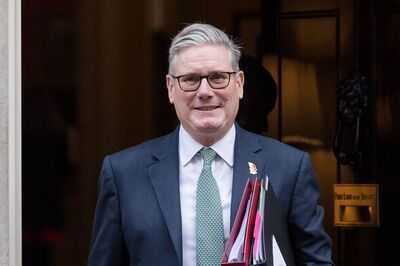In uncertain times for global trade, investment and growth, one question looms large - can poverty really be reduced with limited resources? So, when chief minister Pinarayi Vijayan announced on November 1 that Kerala had eliminated extreme poverty, it made headlines - more because this milestone was achieved by a lower-middle-income state, not a wealthy one. What this outcome means, and what it implies, is worth a closer look.
The starting point for poverty reduction matters a great deal. Kerala has had a comparatively favourable income equality. Its Gini coefficient has been closer to 0.3 compared to over 0.4 in many peer states, meaning that the bottom 50% of the population has a much higher share of total income in Kerala. When greater equality is blended with a favourable position in education and health, the potential for eliminating extreme poverty is created.
It should also be noted that it is extreme destitution that is being considered. It would be a different story if the threshold for poverty were much higher. NITI Aayog uses National Multidimensional Poverty Index (MPI), which considers the share of the population with extreme deprivation in health, education and living standards. For 2019-21, the national average for MPI was 14.96%, ranging from 11.66% in Gujarat to 37.21% in Bihar. MPI for India fell from 24.85% to 14.96% between 2015- 16 and 2019-21. Kerala's change was smaller but started from a far better position: it fell from 0.7% to 0.55%.
Aayog's finding for Kerala of 0.55% MPI gave the government the task to reach everyone that belonged to that 0.55% bracket. Building on a record of favourable income distribution and social indicators, the last step to eliminate extreme destitution was taken.
The state was able to mount ground-level efforts to identify 1,03,099 extremely poor people. This involved surveys on food, health, water and livelihood. Athidridra Nirmarjana identified those outside the support system to change their status within five years. Multiple tests refined deprivation indices of poverty, while rights documents like Aadhaar and ration cards formalised the list of beneficiaries. The provision of essential food and medical care was the top priority in this first phase.
In going the distance in poverty alleviation, it becomes important to prioritise safety nets for the targeted population. That, in turn, brings up differences in needs among the state's extreme poor. For one thing, Kerala has the highest life expectancy in India at 75 yrs. But problems of the aged are acute, including physical and mental ill health and the loneliness of the elderly.
Eliminating extreme poverty is not a one-shot operation, but one that must be sustained through financing and staff deployment. Often forgotten is the need to have an eye on beneficiaries exiting the programme. The goal is to remain free of extreme deprivation even in the absence of safety nets like subsidised or free food grains.
Furthermore, one must be mindful of prospects of the larger group categorised as poor, even if currently they are not in the extreme poor bracket. Large numbers of people are close to the poverty line, moving in and out of poverty over time. Any shock - such as floods and landslides aggravated by climate change or an export slump - can easily knock them down.
Sustaining progress calls for sound economic policies under tough global conditions. The state has registered 6% growth in the past 2 yrs, which needs to be built on with special consideration for precarious fiscal balance. Growth is also indirectly driven by remittances. But as nationalism and protectionism worldwide raise new barriers, the task is to see more income and employment generated locally.
Takeaways from Kerala are both about what has been done and what remains. One lesson relates to the resolve of the state and society to go the extra mile to ensure basic needs for everyone. Another concerns the continuing priority needed to sustain poverty reduction, running this effort in tandem with sound management of the state's investment and fiscal accounts.
The writer is former senior vice-president, World Bank
The starting point for poverty reduction matters a great deal. Kerala has had a comparatively favourable income equality. Its Gini coefficient has been closer to 0.3 compared to over 0.4 in many peer states, meaning that the bottom 50% of the population has a much higher share of total income in Kerala. When greater equality is blended with a favourable position in education and health, the potential for eliminating extreme poverty is created.
It should also be noted that it is extreme destitution that is being considered. It would be a different story if the threshold for poverty were much higher. NITI Aayog uses National Multidimensional Poverty Index (MPI), which considers the share of the population with extreme deprivation in health, education and living standards. For 2019-21, the national average for MPI was 14.96%, ranging from 11.66% in Gujarat to 37.21% in Bihar. MPI for India fell from 24.85% to 14.96% between 2015- 16 and 2019-21. Kerala's change was smaller but started from a far better position: it fell from 0.7% to 0.55%.
Aayog's finding for Kerala of 0.55% MPI gave the government the task to reach everyone that belonged to that 0.55% bracket. Building on a record of favourable income distribution and social indicators, the last step to eliminate extreme destitution was taken.
The state was able to mount ground-level efforts to identify 1,03,099 extremely poor people. This involved surveys on food, health, water and livelihood. Athidridra Nirmarjana identified those outside the support system to change their status within five years. Multiple tests refined deprivation indices of poverty, while rights documents like Aadhaar and ration cards formalised the list of beneficiaries. The provision of essential food and medical care was the top priority in this first phase.
In going the distance in poverty alleviation, it becomes important to prioritise safety nets for the targeted population. That, in turn, brings up differences in needs among the state's extreme poor. For one thing, Kerala has the highest life expectancy in India at 75 yrs. But problems of the aged are acute, including physical and mental ill health and the loneliness of the elderly.
Eliminating extreme poverty is not a one-shot operation, but one that must be sustained through financing and staff deployment. Often forgotten is the need to have an eye on beneficiaries exiting the programme. The goal is to remain free of extreme deprivation even in the absence of safety nets like subsidised or free food grains.
Furthermore, one must be mindful of prospects of the larger group categorised as poor, even if currently they are not in the extreme poor bracket. Large numbers of people are close to the poverty line, moving in and out of poverty over time. Any shock - such as floods and landslides aggravated by climate change or an export slump - can easily knock them down.
Sustaining progress calls for sound economic policies under tough global conditions. The state has registered 6% growth in the past 2 yrs, which needs to be built on with special consideration for precarious fiscal balance. Growth is also indirectly driven by remittances. But as nationalism and protectionism worldwide raise new barriers, the task is to see more income and employment generated locally.
Takeaways from Kerala are both about what has been done and what remains. One lesson relates to the resolve of the state and society to go the extra mile to ensure basic needs for everyone. Another concerns the continuing priority needed to sustain poverty reduction, running this effort in tandem with sound management of the state's investment and fiscal accounts.
The writer is former senior vice-president, World Bank
(Disclaimer: The opinions expressed in this column are that of the writer. The facts and opinions expressed here do not reflect the views of www.economictimes.com.)









Vinod Thomas
Thomas is former senior vice-president, World Bank